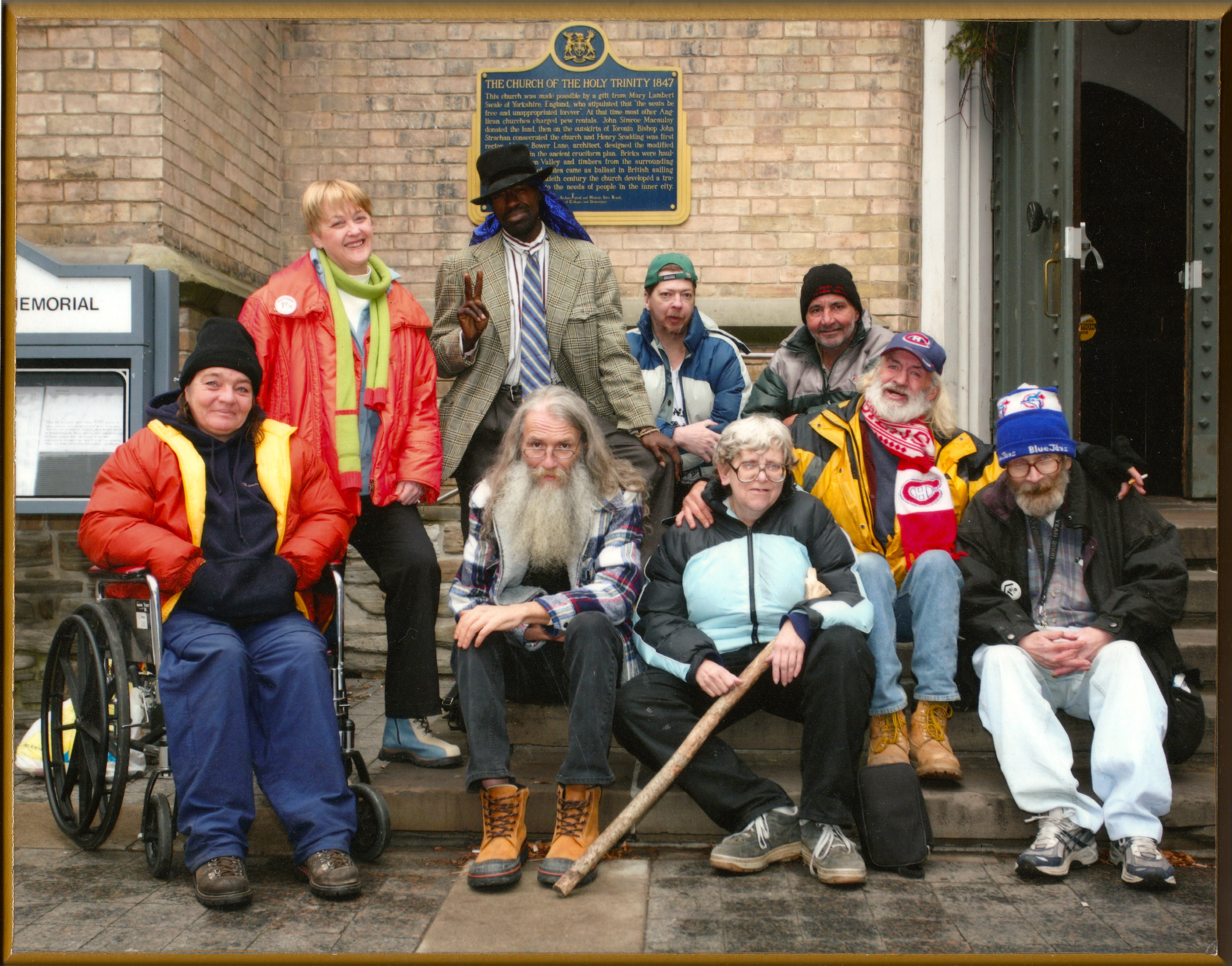Last week, we celebrated the 15th anniversary of the brutal Tent City eviction from Toronto’s waterfront. Why did we celebrate? We celebrated because over 100 formerly homeless Tent City residents won housing, almost immediately after their eviction in the form of a pilot rent supplement program.
Like today, the shelter system then was intolerable. The crowding, rules, and risk of bedbugs, tuberculosis and theft were not humane conditions. The early Tent City residents, Marty Lang, Nancy Baker, The Colonel, Brian Boyd and Dri, made it perfectly clear they were not going to remain stuck in shelters. They believed in the right to housing, so they created their own.
Tent City will go down in history. The early Tent City residents created a squatter’s camp on Toronto’s waterfront, perhaps one of the most expensive pieces of property in the country — owned by Home Depot. Early on, a handful of people asked for our aid. Our numbers grew to 140 residents over three years, and Tent City turned out to be the largest and longest act of civil disobedience by homeless people since the 1930s Depression.
Many of the men and women living there were labourers: drywallers, roofers, and steelworkers. Some had worked in social services. There were couples and people with disabilities. Toronto Disaster Relief Committee (TDRC) provided disaster relief, and the aid we helped to coordinate included providing portable toilets (that was my file!), insulation, woodstoves for heat and cooking, propane and generators, and camping shower bags.
We also brought in disaster housing, which were pre-fab homes made by a company called DuraKit, and used most often in countries dealing with natural disasters. We experimented, working with Architects Alliance’s John Van Nostrand and some of the Tent City residents to build a Pro-Home house that Van Nostrand had designed, which included a composting toilet and shower. We held regular meetings, usually with a dinner of Kentucky Fried Chicken. By the end of the four years, Tent City comprised over 50 houses (no one was left in a tent), approximately 140 people, and a dozen dogs and cats. The community had experienced a birth, several deaths, and had even built a place of worship, although it was ultimately blown down in a storm.
Unique to Tent City was the external support that ensured the community’s safety from police and from eviction. Social service agencies, health centres, the Rotary Club, faith groups and unions helped to protect the community from such threats. It was one big experiment, essentially a refugee camp on Toronto’s waterfront.
On the night of Tent City’s eventual eviction, Woodgreen, a local social services agency, opened its gym to all 140 residents and their pets. The agency later became the supportive housing provider and co-hosted Tent City anniversary celebrations in a nearby park.
Many of the Tent City residents were activists who fought for housing for themselves but also for a national housing program. Activists and residents gave media interviews, travelled with us to rallies and conferences, and they demanded support for a national housing program.
Nancy, in a poignant video message that I delivered in Ottawa to then Minister Responsible for Homelessness Claudette Bradshaw appealed:
” My name is Nancy Baker, and I’m a resident of Tent City. I’ve been down here approximately two years. Minister Bradshaw, we’re coming to you on behalf of us homeless people. Please give us housing. Help us in this disaster where we are. If we had affordable housing, if we had suitable housing, and not shelters, there wouldn’t be as many people dying on the streets as there is today.“
The Tent City celebration party last week echoed Baker’s sentiment. The Colonel and others explained to the media there is still much work to be done in Canada to mitigate homelessness.
There are huge lessons to be learned from Tent City. Like we learned from the Moss Park Supervised Injection Site, sometimes you have to resort to civil disobedience to save lives.
The rent supplement program was a lesson for all of Canada. If you give people enough money to stay in housing, they will.
So, now we wait to see what the federal government will include in their national housing strategy, and in the meantime, we will continue to fight for shelters at the local level.
Michael Connelly’s documentary film Shelter from the Storm recounts the entire Tent City story and can be viewed online at: http://www.amistadvideoandfilm.com/documentary-gallery
Photo: Vince Pietropaolo from Dying for a Home. Homeless Activists Speak Out by Cathy Crowe (Between the Lines, 2007)
Like this article? Please chip in to keep stories like these coming. 



